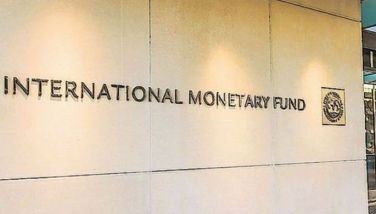Gov’t urged to ease entry of farming, fishery inputs
July 21, 2004 | 12:00am
Outgoing Agriculture Secretary Luis P. Lorenzo Jr. is urging the government to scrap bureaucratic red tape in granting duty-free incentives for the importation of farm and fishery inputs and equipment under the Agriculture and Fisheries Modernization Act (AFMA)
Lorenzo also warned that proposals to change the categories for granting incentives will push up production costs of certain items covered under AFMA such as feed ingredients.
He said the additional costs of end-users such as poultry and livestock raisers will subsequently burden the public with higher prices of meat products such as chicken, pork and beef.
"Red tape should be eliminated if we are to meet government’s 10-point agenda of revitalizing one to two million hectares of land for agribusiness and generate between six to 10 million jobs in the next six years. We need to look at the rationale and streamline all procedures, make it easy for farmers and entrepreneurs to get needed inputs and equipment. We have to give the sector the support it requires and not saddle them with more paperwork," Lorenzo said.
Under the proposed implementing rules and regulations (IRR) of RA 9281 which extended the five-year duty-free privileges under AFMA until 2015, the task force on tariff exemptions for fisheries and agriculture modernization (TF-TEFAM) are threshing out two major issues – who are eligible and what procedures are required to avail of these duty-free incentives.
Other government agencies in the TF-TEFAM are pushing for a mandatory certificate of eligibility before any enterprise can import the items listed in either Annex B or C and avail of the duty-free incentives.
Under EO 127 which provides for the creation of IRR under AFMA, articles covered Annex B or those used exclusively by agriculture and fishery enterprises, can be imported without the need to secure a certificate of eligibility.
Annex C refers to articles used for other purposes and for which a certificate of eligibility must first be secured before these can be granted duty-free incentives.
Examples of items that fall under Annex B are pure-bred breeding animals, automatic fish feeders, paddlewheels and circular aerators, ploughs, seeders, planters and transplanters, and dairy machinery.
Examples of items under Annex C are conveyor belts, high density polyethylene liners, agricultural tractor tires, disinfectants, urea whether or not in aquaeous solution, hand pumps, and lifeboats.
"Those importing items used exclusively by agriculture and fishery enterprises should be spared of the difficulty of having to go through additional bureaucratic red tape to secure a certificate of eligibility," Lorenzo said.
He added that a certificate of eligibility should be secured only if the items to be imported are not used exclusively by agriculture and fishery enterprises. "These were the original criteria and I do not see why we should change them and complicate further the procedures that entrepreneurs and investors have to go through," Lorenzo added.
Lorenzo is also calling for the expansion of the definition of "agricultural enterprises" to include agricultural processors among those who could avail of the duty-free importation of farm and fishery inputs and equipment listed under Annex C. Under the original rules, agricultural processors are not eligible of the duty-free incentives for items under Annex C.
Other members of the TF-TEFAM are pushing to limit the grant of these incentives to enterprises with asset base of not more than P60 million.
At the same time, Lorenzo expressed concern over the TF-TEFAM recommendation to transfer feed ingredients from Annex B to Annex C as these may lead to an increase in the cost of feeds, which is a major cost component for livestock and poultry raisers. It was noted that from 1999 to 2003, the bulk of duty-free incentives were availed by big firms who imported mostly feed ingredients.
"But it is the backyard raisers who would eventually be affected, they who account for about 80 percent of the industry," Lorenzo said.
Lorenzo also warned that proposals to change the categories for granting incentives will push up production costs of certain items covered under AFMA such as feed ingredients.
He said the additional costs of end-users such as poultry and livestock raisers will subsequently burden the public with higher prices of meat products such as chicken, pork and beef.
"Red tape should be eliminated if we are to meet government’s 10-point agenda of revitalizing one to two million hectares of land for agribusiness and generate between six to 10 million jobs in the next six years. We need to look at the rationale and streamline all procedures, make it easy for farmers and entrepreneurs to get needed inputs and equipment. We have to give the sector the support it requires and not saddle them with more paperwork," Lorenzo said.
Under the proposed implementing rules and regulations (IRR) of RA 9281 which extended the five-year duty-free privileges under AFMA until 2015, the task force on tariff exemptions for fisheries and agriculture modernization (TF-TEFAM) are threshing out two major issues – who are eligible and what procedures are required to avail of these duty-free incentives.
Other government agencies in the TF-TEFAM are pushing for a mandatory certificate of eligibility before any enterprise can import the items listed in either Annex B or C and avail of the duty-free incentives.
Under EO 127 which provides for the creation of IRR under AFMA, articles covered Annex B or those used exclusively by agriculture and fishery enterprises, can be imported without the need to secure a certificate of eligibility.
Annex C refers to articles used for other purposes and for which a certificate of eligibility must first be secured before these can be granted duty-free incentives.
Examples of items that fall under Annex B are pure-bred breeding animals, automatic fish feeders, paddlewheels and circular aerators, ploughs, seeders, planters and transplanters, and dairy machinery.
Examples of items under Annex C are conveyor belts, high density polyethylene liners, agricultural tractor tires, disinfectants, urea whether or not in aquaeous solution, hand pumps, and lifeboats.
"Those importing items used exclusively by agriculture and fishery enterprises should be spared of the difficulty of having to go through additional bureaucratic red tape to secure a certificate of eligibility," Lorenzo said.
He added that a certificate of eligibility should be secured only if the items to be imported are not used exclusively by agriculture and fishery enterprises. "These were the original criteria and I do not see why we should change them and complicate further the procedures that entrepreneurs and investors have to go through," Lorenzo added.
Lorenzo is also calling for the expansion of the definition of "agricultural enterprises" to include agricultural processors among those who could avail of the duty-free importation of farm and fishery inputs and equipment listed under Annex C. Under the original rules, agricultural processors are not eligible of the duty-free incentives for items under Annex C.
Other members of the TF-TEFAM are pushing to limit the grant of these incentives to enterprises with asset base of not more than P60 million.
At the same time, Lorenzo expressed concern over the TF-TEFAM recommendation to transfer feed ingredients from Annex B to Annex C as these may lead to an increase in the cost of feeds, which is a major cost component for livestock and poultry raisers. It was noted that from 1999 to 2003, the bulk of duty-free incentives were availed by big firms who imported mostly feed ingredients.
"But it is the backyard raisers who would eventually be affected, they who account for about 80 percent of the industry," Lorenzo said.
BrandSpace Articles
<
>
- Latest
- Trending
Trending
Latest





























